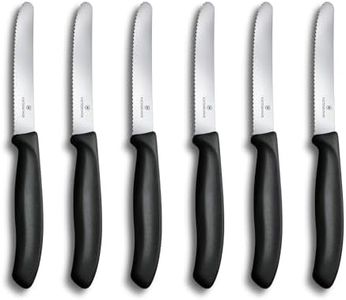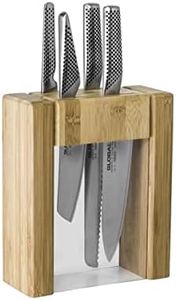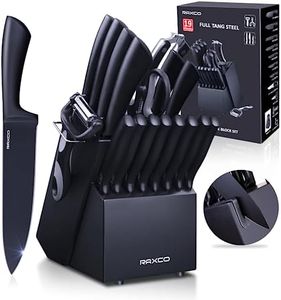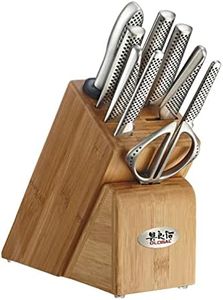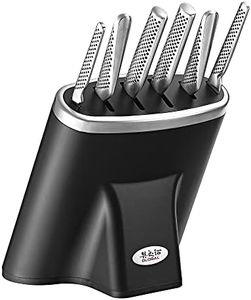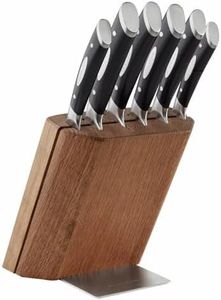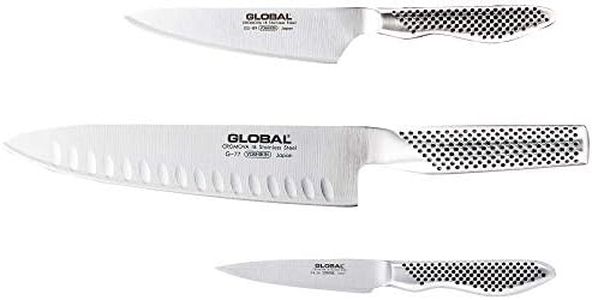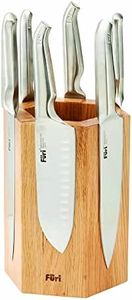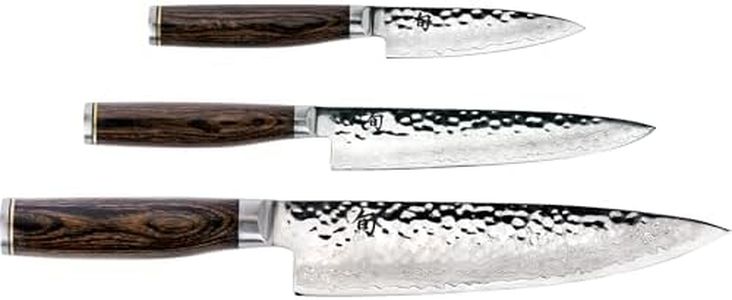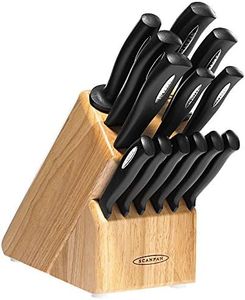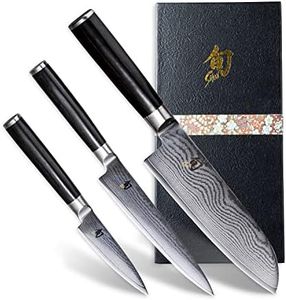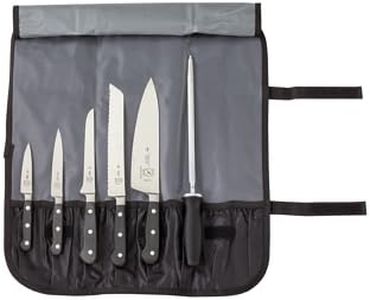We Use CookiesWe use cookies to enhance the security, performance,
functionality and for analytical and promotional activities. By continuing to browse this site you
are agreeing to our privacy policy
10 Best Knife Sets
From leading brands and best sellers available on the web.Buying Guide for the Best Knife Sets
When shopping for a knife set, it's important to focus on what types of knives you'll actually use in your kitchen, their quality, and how comfortable they feel in your hand. A great set can make meal prep easier and safer, but getting too many knives you won't use just takes up space. Pay attention to materials, construction, and how comprehensive the set is for your needs.Knife Types IncludedThe variety and types of knives in a set matter because different knives are designed for different tasks, such as chopping, slicing, or paring. A basic set typically features a chef's knife, bread knife, paring knife, and utility knife, while more advanced sets add specialty knives like boning or santoku knives. If you cook a lot or enjoy experimenting, a larger set might be handy, but for everyday cooking, a few versatile knives may be enough. Think about the meals you prepare most often to decide which knives you actually need.
Blade MaterialBlade material affects a knife’s performance, durability, and maintenance. Common options are stainless steel, high-carbon steel, and ceramic. Stainless steel resists rust and is easy to care for, while high-carbon steel tends to stay sharper longer but may require extra care to avoid rust. Ceramic blades are incredibly sharp and lightweight but can chip easily. If you want low maintenance, stainless steel is often a good choice, but if you’re seeking sharper edges and don’t mind a little upkeep, high-carbon may appeal to you.
Handle Comfort and MaterialKnife handle comfort is crucial for safe and easy use, especially during long prep sessions. Handles can be made from plastic, wood, or composite materials, each offering a different grip and feel. Ergonomic handles with a good grip reduce hand fatigue and the risk of slipping, while the weight and balance should feel comfortable to you. If possible, test in hand or read user reviews about comfort—especially if you have small or large hands or specific comfort needs.
Tang ConstructionTang refers to how far the blade extends into the handle. Full-tang knives, where the blade runs the full length of the handle, offer more strength and balance. Partial-tang knives are lighter but often less durable and balanced. If you're looking for lasting quality and good balance, a full-tang design is generally best, especially for heavy-duty cutting.
Sharpness and Edge RetentionSharpness determines how easily a knife cuts, while edge retention is how long that sharpness lasts. Factory-sharp knives are ready to go, but edge retention affects how soon you'll need to sharpen them. High-quality steels and superior manufacturing tend to yield better edge retention. If you prefer less frequent sharpening, look for sets with good reviews on edge holding, but remember all knives need sharpening at some point.
Storage SolutionsSets often include storage like blocks, magnetic strips, or sheaths. A storage block keeps knives organized and protected, while a magnetic strip saves counter space. Think about your kitchen space and where you'll keep your knives safe and accessible. Choose a storage method that fits both your kitchen and your routine.
Maintenance RequirementsSome knives require more care, such as hand washing and immediate drying, especially high-carbon steel ones, whereas many stainless-steel knives are dishwasher safe (though even then, hand washing is recommended for longevity). If you prefer low-maintenance, look for rust-resistant materials and dishwasher-safe options, but remember that good knives often last longer with hand washing.
